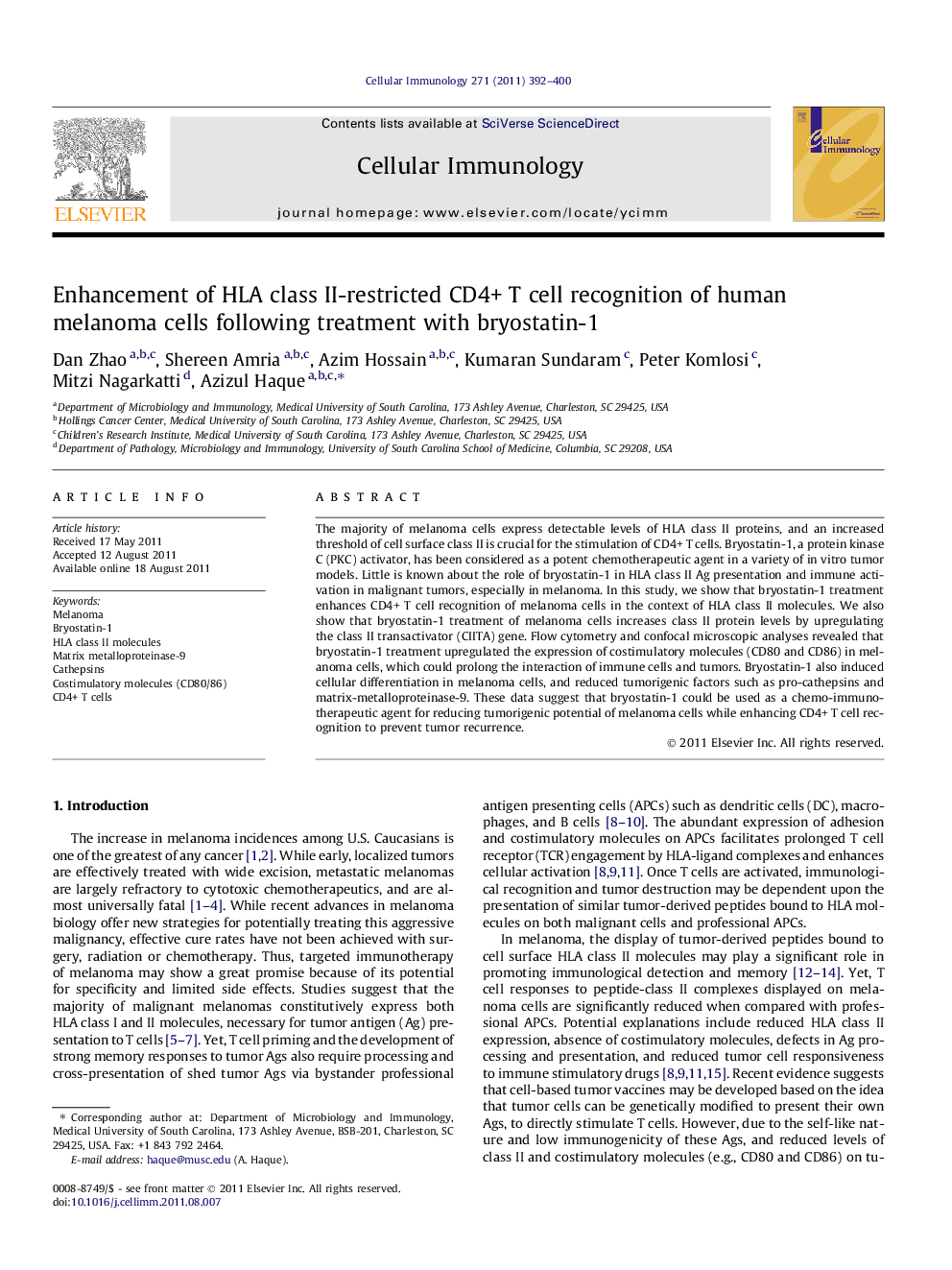| Article ID | Journal | Published Year | Pages | File Type |
|---|---|---|---|---|
| 2167296 | Cellular Immunology | 2011 | 9 Pages |
The majority of melanoma cells express detectable levels of HLA class II proteins, and an increased threshold of cell surface class II is crucial for the stimulation of CD4+ T cells. Bryostatin-1, a protein kinase C (PKC) activator, has been considered as a potent chemotherapeutic agent in a variety of in vitro tumor models. Little is known about the role of bryostatin-1 in HLA class II Ag presentation and immune activation in malignant tumors, especially in melanoma. In this study, we show that bryostatin-1 treatment enhances CD4+ T cell recognition of melanoma cells in the context of HLA class II molecules. We also show that bryostatin-1 treatment of melanoma cells increases class II protein levels by upregulating the class II transactivator (CIITA) gene. Flow cytometry and confocal microscopic analyses revealed that bryostatin-1 treatment upregulated the expression of costimulatory molecules (CD80 and CD86) in melanoma cells, which could prolong the interaction of immune cells and tumors. Bryostatin-1 also induced cellular differentiation in melanoma cells, and reduced tumorigenic factors such as pro-cathepsins and matrix-metalloproteinase-9. These data suggest that bryostatin-1 could be used as a chemo-immunotherapeutic agent for reducing tumorigenic potential of melanoma cells while enhancing CD4+ T cell recognition to prevent tumor recurrence.
► We uncover the role of bryostatin-1 in immune recognition of melanoma. ► We investigate changes in immune components by bryostatin-1. ► Enhancement of class II components reduces tumorigenic potential of melanoma. ► Increasing immune responses will enhance immune-mediated elimination of tumors. ► Information obtained will help design better chemo-immunotherapeutics.
